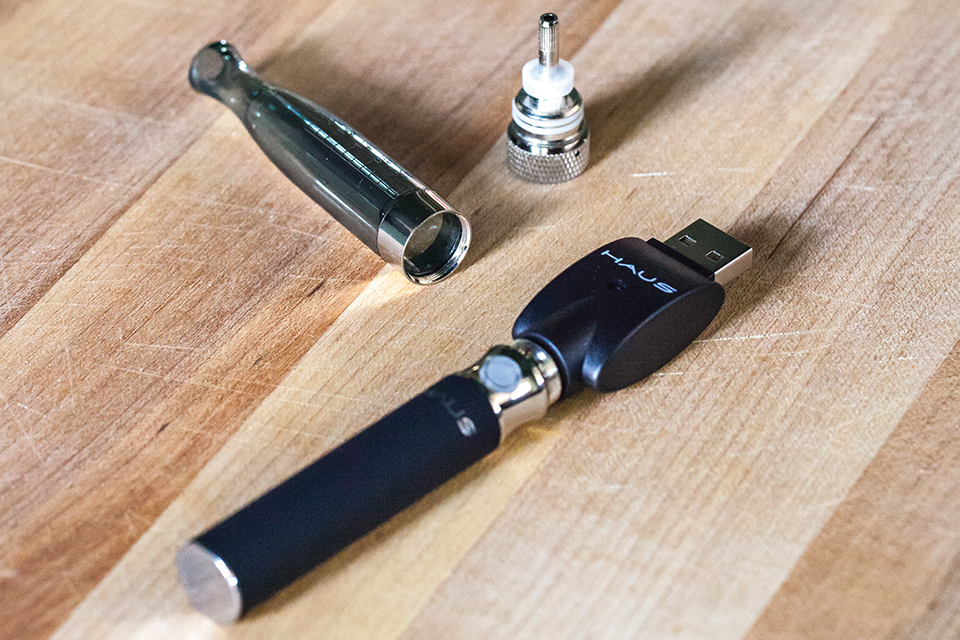E-Cigarettes

An electronic cigarette (e-cigarette) is a vaporizer that simulates tobacco smoke. Battery operated, it produces “smoke,” an aerosol created by heating a liquid solution that contains a mixture of propylene glycol, vegetable glycerine, nicotine, and various flavorings (such as vanilla or mint).
In 2014, the FDA proposed regulations and requirements for e-cigarettes and other forms of unregulated tobacco products. The FDA currently regulates cigarettes, cigarette tobacco, and smokeless tobacco.
With e-cigarettes, smoking is replaced by “vaping”—nothing is really burned. They are tobacco-free.
E-cigarette users still experience diminished lung function, airway restriction, and cellular changes.
Because they are presented as smokeless tobacco products, e-cigarettes are allowed in otherwise smoke-free environments like movie theaters, restaurants, and bars.
Health officials and regulatory agencies are uncertain if there are health advantages associated with e-cigarette use, as opposed to smoking tobacco. While e-cigarettes are smoke- and tobacco-free, they do still contain nicotine. In addition, there is a perceived lack of disclosure from manufacturers about all the ingredients. For instance, the Food and Drug Administration has previously tested liquid nicotine cartridges and found inconsistency among the levels of nicotine listed on the products.
First developed in China, e-cigarettes landed on the U.S. markets in 2007.
According to The New York Times, a letter signed by 40 state attorneys general last year pushed the FDA to regulate e-cigarettes, and their related advertising, ingredients, and sales to minors.
Cigarette smoke contains thousands of chemicals. At least 50 of them are known carcinogens.
Liquid nicotine, found in e-cigarettes, is extracted from tobacco and possesses its own poisonous qualities, according to the Centers for Disease Control. It is especially harmful when ingested or absorbed through the skin. The CDC reports that the number of calls to poison control centers regarding e-cigarette nicotine incidents have risen sharply from 2010 to 2014. Almost 50 percent of those calls involve accidental poisoning to children under the age of 5.






